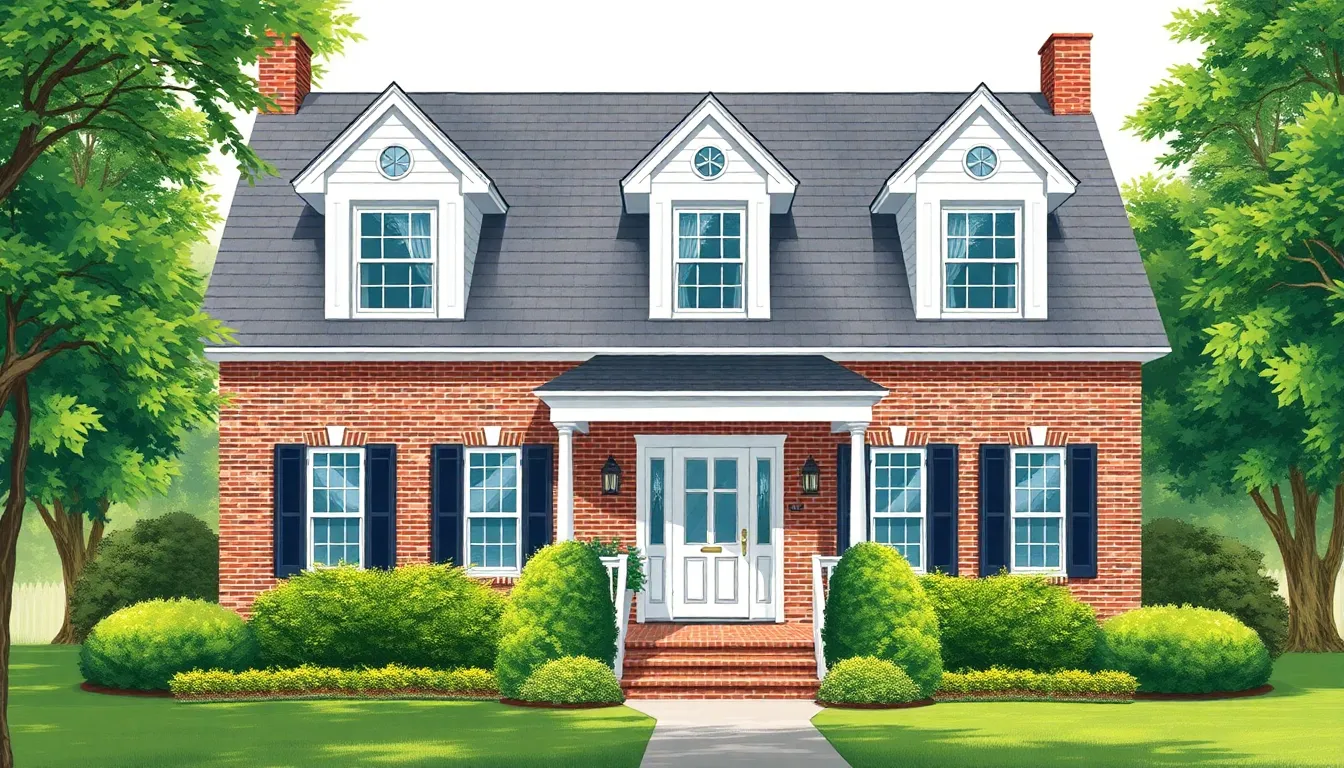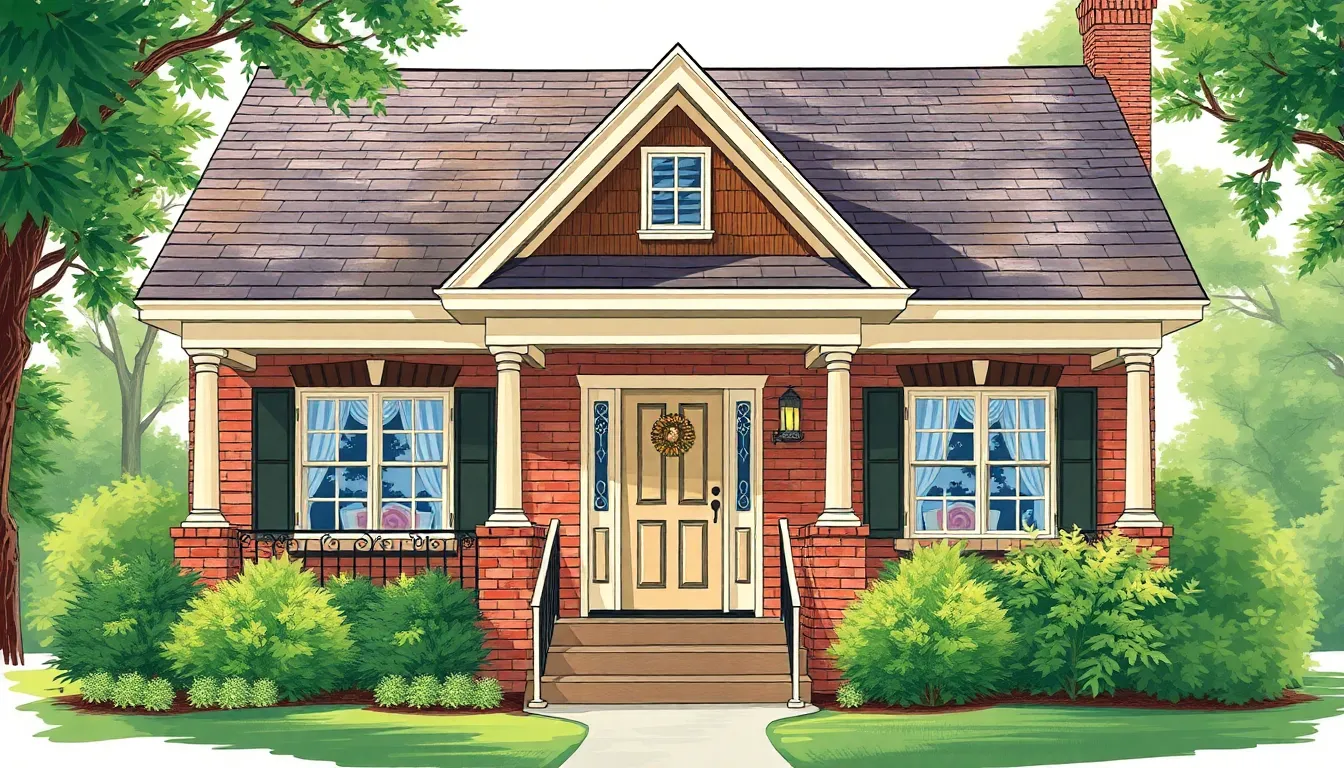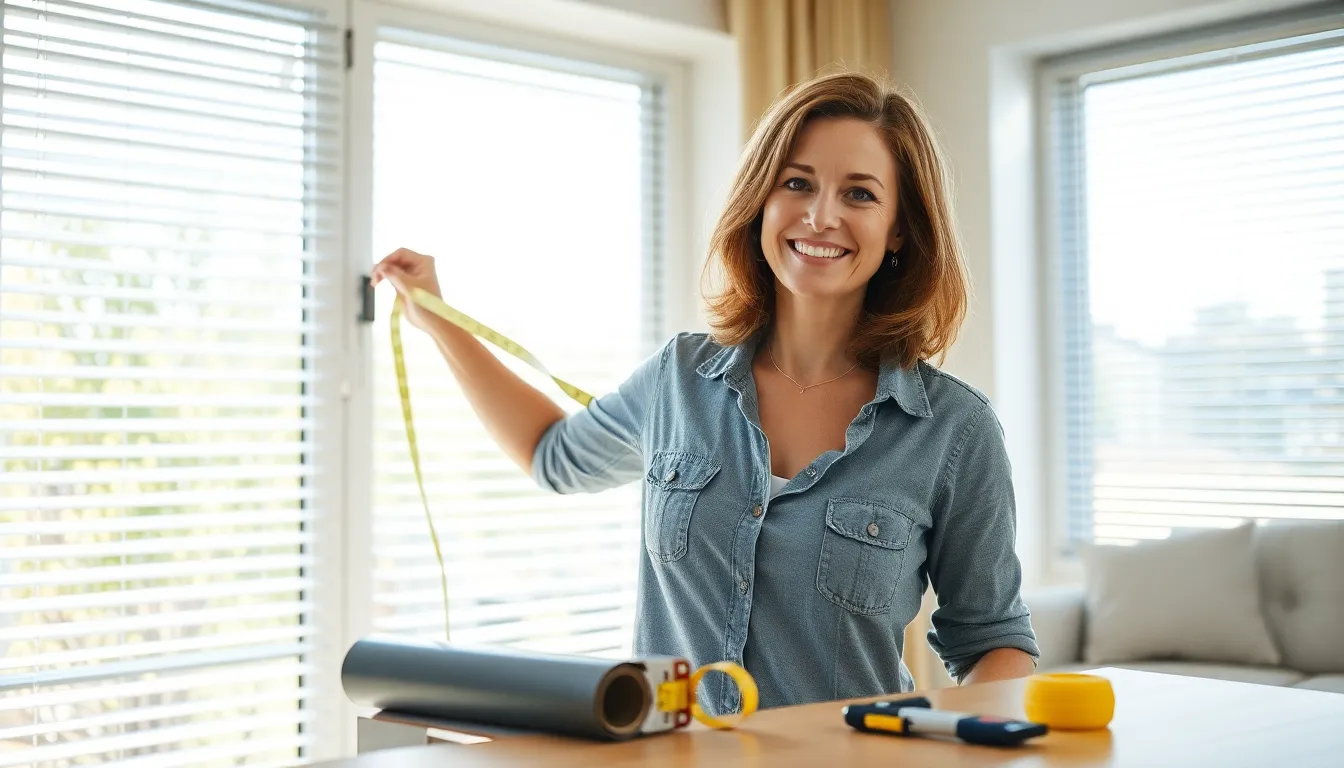In a world where minimalism reigns supreme and open-concept layouts have taken over, traditional home designs stand as a charming reminder of comfort and nostalgia. Imagine walking into a space that feels like a warm hug, where every corner tells a story and the walls practically whisper secrets of the past. These homes invite you to kick off your shoes and settle in, offering a cozy retreat from the chaos of modern life.
Traditional designs blend classic architecture with timeless elements, creating a unique character that many find irresistible. From elegant crown moldings to inviting front porches, these homes exude a sense of belonging that’s often missing in today’s cookie-cutter builds. So why not explore the magic of traditional home designs? After all, who wouldn’t want a home that feels like a beloved storybook come to life?
Table of Contents
ToggleOverview of Traditional Home Designs
Traditional home designs offer a cozy escape from modern minimalism and open-concept layouts. These homes evoke comfort and nostalgia, filled with unique character that stands in contrast to contemporary styles.
Key Characteristics
Distinctive features define traditional homes. Rooflines often showcase gables, and front porches extend an inviting welcome. Architectural elements include crown moldings, window shutters, and detailed woodwork that add charm. Symmetrical facades attract the eye, while warm color palettes create a sense of warmth. Rooms typically feature defined spaces, encouraging intimate gatherings, unlike open layouts favored in modern designs.
Common Materials Used
Natural materials form the foundation of traditional homes. Wood plays a prominent role, seen in framing, flooring, and cabinetry. Brick and stone enhance exterior durability, lending timeless appeal. Shingles are common for roofs, providing both protection and aesthetic value. Decorative elements often involve wrought iron for railings or fixtures, contributing to the overall authenticity. These materials work together to create spaces that reflect history and craftsmanship.
Popular Styles of Traditional Home Designs

Traditional home designs encompass various styles, each with unique features and historical roots. These styles evoke charm and elegance, often showcasing craftsmanship and character.
Colonial Style
Colonial homes reflect America’s early architectural influences, characterized by symmetry and grandeur. Tall ordered windows align with a central front door, creating a balanced facade. Typically, these homes showcase a combination of brick and wood siding. Rooflines often feature gables and dormers, enhancing visual interest. Interior spaces include defined rooms, often showcasing fireplaces as focal points. Large porches serve as perfect gathering spots, inviting social interaction. Many Colonial-style homes incorporate decorative elements like shutters and cornices to enhance their historical aesthetic.
Victorian Style
Victorian homes highlight elaborate details and vibrant colors, embodying the ornate flair of the 19th century. Unique rooflines often include towers, turrets, and complex shapes, creating a distinctive silhouette. Rich textures in materials such as wood and stone enhance the overall appeal. Intricate woodwork, including gingerbread accents, draws eyes to porches and trim. Stained glass windows contribute to a sense of artistry and charm. Many Victorian houses feature asymmetrical designs, promoting visual drama and excitement. Landscaping elements often complement the architecture, adding to the allure of these homes.
Craftsman Style
Craftsman homes emphasize natural materials and handcrafted details, reflecting the Arts and Crafts movement. Heavy timbers, exposed beams, and stone accents define the exterior, connecting the structure to its surroundings. Low-pitched rooflines and wide front porches create an inviting atmosphere. Built-in furniture and open floor plans maximize usable space inside. Many Craftsman homes feature built-in bookcases and mantels, fostering a cozy setting. Artistic tile work often decorates fireplaces and porches, showcasing the attention to detail. This style encourages a connection to nature, integrating craftsmanship with functionality.
Benefits of Choosing Traditional Home Designs
Traditional home designs offer numerous advantages that appeal to many homeowners.
Timeless Aesthetic
Traditional homes embody a timeless aesthetic that withstands the test of trends. Unique architectural details like gables, crown moldings, and decorative columns create an allure that draws interest. These elements enhance curb appeal, ensuring that properties remain visually pleasing for years. Warm color palettes unify the exterior and interior, fostering a sense of coziness. Natural materials, including wood, brick, and stone, contribute to an authentic look while adding durability. Choosing traditional designs often invites admiration from neighbors and visitors alike, ensuring lasting impressions.
Emotional Resonance
Emotional resonance defines the appeal of traditional home designs. Many individuals associate these homes with childhood memories and family gatherings, deepening their connection to these spaces. Such homes often evoke feelings of comfort and safety, offering a retreat from fast-paced modern life. Inviting front porches and cozy living rooms encourage social interaction, strengthening community ties. The authenticity of traditional elements fosters a sense of belonging, which contemporary designs sometimes lack. Homeowners often find joy in shared moments within these warm, welcoming environments.
Modern Interpretations of Traditional Home Designs
Modern interpretations of traditional home designs resonate with many homeowners who seek to capture classic warmth while embracing contemporary function.
Blending with Contemporary Elements
Fusion of traditional and contemporary styles creates unique aesthetics. Many homeowners incorporate large windows to enhance natural light while maintaining traditional architectural features. Open floor plans often merge defined spaces, maximizing functionality without sacrificing charm. Designers frequently use updated color palettes, blending bold hues with classic neutrals. Elements like minimalist decor and sleek furniture complement intricate moldings, showcasing harmony between past and present. This blending fosters inviting living environments while appealing to modern sensibilities.
Sustainable Practices in Traditional Design
Sustainability gains importance in modern interpretations of traditional designs. Use of reclaimed wood enhances sustainability while adding character to homes. Energy-efficient windows and insulation improve comfort and reduce environmental impact. Many builders prioritize sourcing local materials, minimizing transportation emissions and supporting local economies. Integration of green landscaping promotes biodiversity and aesthetic appeal. Ultimately, these practices not only honor traditional craftsmanship but also reflect a growing commitment to environmental stewardship, merging past values with present responsibilities.
Traditional home designs offer a timeless allure that resonates deeply with many homeowners. Their unique architectural features and warm aesthetics create spaces that feel both inviting and nostalgic. By blending classic elements with modern functionality, these homes provide a perfect balance of comfort and practicality.
The emotional connection to traditional homes fosters a sense of community and belonging, making them cherished retreats from the hustle of contemporary life. As homeowners continue to seek spaces that reflect their values and memories, the charm of traditional designs remains an enduring choice. Embracing these styles not only honors the past but also enriches the present, ensuring that the magic of traditional homes continues to thrive.








